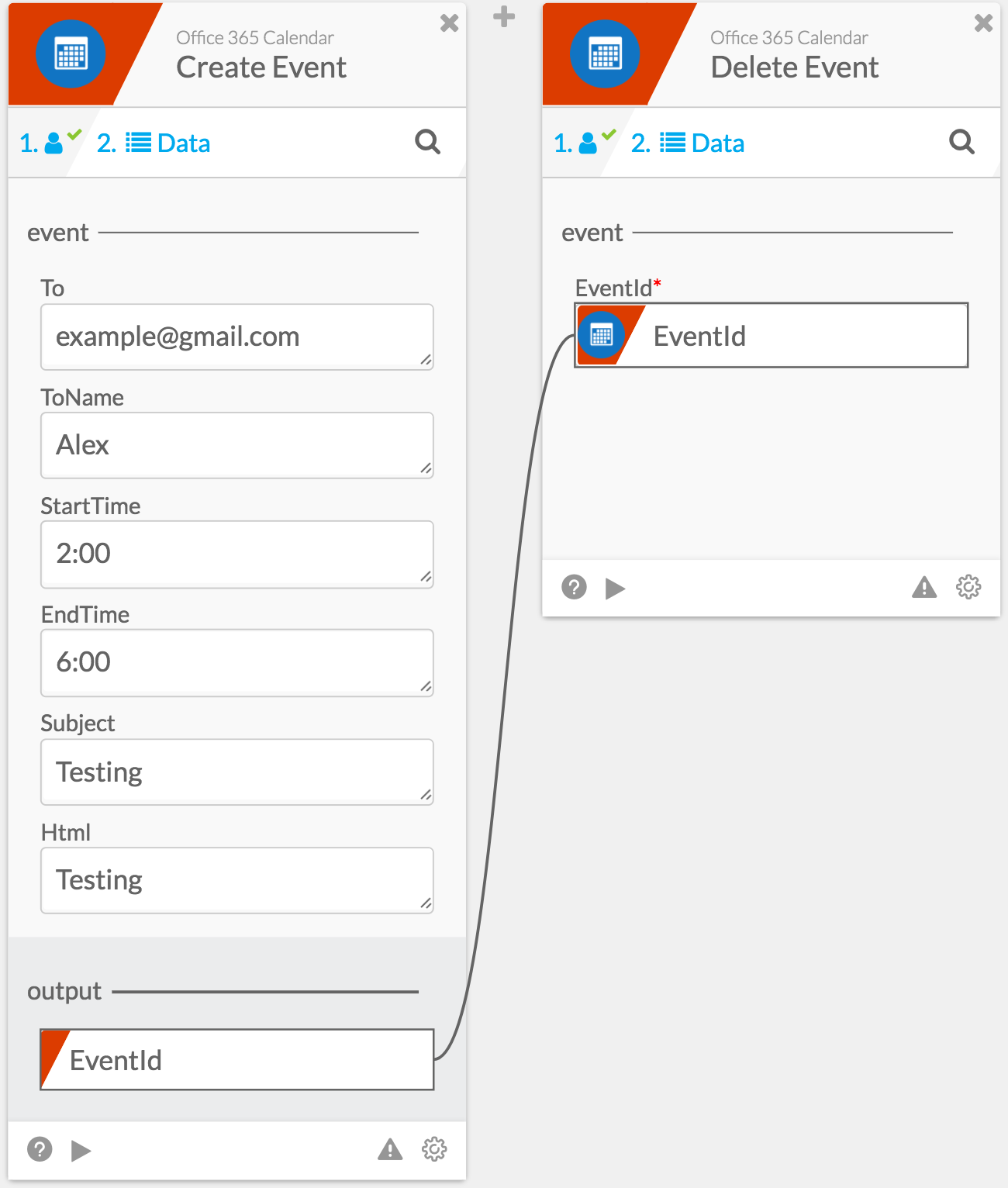This Flow runs when a new calendar event is created.
Note that the date and time fields are in the text type, not the date type - that’s because this connector was developed before the date type was available for connectors. If you need to convert them to the date type, try the Text to Date function.
Output Fields
- EventId (text): the event id of the newly created event
- OrganizerName (text): the name of the person who created the event
- OrganizerEmail (text): the email address of the person who created the event
- StartTime (text): the time the event starts
- EndTime (text): the time the event ends
- Subject (text): the subject of the event
- Html (text): the event description, in HTML format (i.e. text plus HTML markup)
- CreatedDateTime (text): the date and time that the event was created
- Attendees Email (list of text): a list of all attendee email addresses
- location (text): The location of the event
- BodyPreview (text): The preview of the message associated with the event
- Importance (text): The importance of the event; this will be either Low, Normal, or High
- Sensitivity (text): Indicates the level of privacy for the event: Normal = 0, Personal = 1, Private = 2, Confidential = 3
- IsAllDay (True/False): Set to true if the event lasts all day
- IsCancelled (True/False): Set to true if the event has been canceled
- isOrganizer (True/False): Set to true if the message sender is also the organizer
- ResponseRequested (True/False): Set to true if the sender would like a response when the event is accepted or declined
- SeriesMasterid (text): The categories assigned to the item
- ShowAs (text): The status to show: Free = 0, Tentative = 1, Busy = 2, Oof = 3, WorkingElsewhere = 4, Unknown = -1
- type (text): The event type: SingleInstance = 0, Occurrence = 1, Exception = 2, SeriesMaster = 3
- WebLink (text): The URL to open the event in Outlook Web App. This URL can be accessed from within an iFrame
- OnlineMeetingUrl (text): A URL for an online meeting
- HasAttachments (True/False): Set to true if the event has attachments
- OriginalStartTimeZone (text): The start time zone that was set when the event was created. See here for more details.
- OriginalEndTimeZone (text): The end time zone that was set when the event was created. See here for more details.
- Execution ID (text): The unique identifier for the execution of the Flow.

